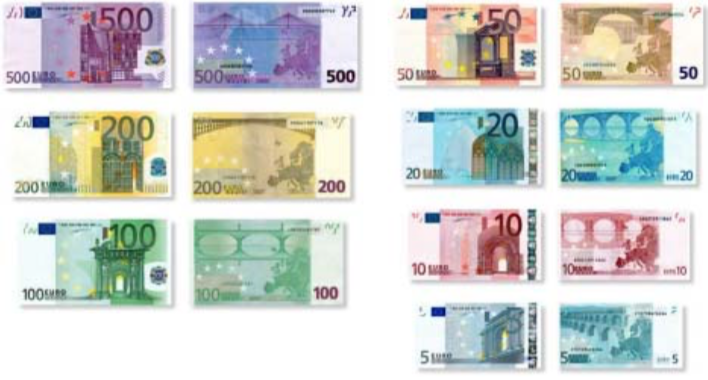The New Euro
It has been reported here in the e-journal as well as in other publications that, with the public’s unfamiliarity with the Euro, many fraudsters have been producing fake Euros with the expectation of reaping profits from the unsuspecting and unfamiliar public when the new Euros begin circulating. Counterfeiting rings that are producing fake Euros for exchange for other national currencies, targeting exchange houses frequented by international travelers, have been broken up, but authorities are aware of others they have been unable to locate.
The European Monetary Institute (EMI) launched a euro banknote design competition in February 1996, which ran until mid-September of the same year. In December 1996 the EMI Council selected a single design series, taking particular account of the advice of an international jury of renowned experts in marketing, design, and art history, and the results of a public consultation exercise carried out in 14 Member States. The design sketches were subsequently updated. The euro banknotes depict the architectural styles of seven periods in Europe’s cultural history: Classical, Romanesque, Gothic, Renaissance, Baroque and Rococo, the age of iron and glass architecture and modern 20th century with emphasis on the three main elements of architecture, windows, gateway and bridges.
Banknotes
Various anti-forgery features have been incorporated into the euro banknotes. They will help you to recognize a genuine banknote at a glance.
Feel the “raised” print – the special printing processes give banknotes their unique feel.
Look at the banknote and hold it up to the light: the watermark, the security thread and the see-through register will then be visible. All three features can be seen from the front and the reverse side of genuine banknotes.
Tilt the banknote: on the front of the banknote, you can see the shifting image on the hologram foil stripe (on the low-value banknotes) or the hologram foil patch (on the high-value banknotes).
Tilt the banknote: on the reverse side, if you tilt the banknote, you can see the brilliance of the iridescent stripe (on the low-value banknotes) or the color-shifting ink (on the high-value banknotes).
Coins
The euro coins also were produced according to advanced technical specifications that make reproduction extremely difficult, and easy to detect.
Particular care has been taken to include unique anti-counterfeiting features on the EUR1 and EUR2 coins.
The EUR1 and EUR2 coins are produced using sophisticated bi- metal technology, which makes them difficult to counterfeit. You will find lettering around the edge of the EUR2 coin. The euro coins incorporate the safest machine-readable characteristics and will be used in vending machines throughout the euro area, irrespective of the Member State that issued them.
In compliance with the legal framework for the use of the euro, the irrevocable conversion rate for the euro for each participating currency is the only rate to be used for conversion either way between the euro and the national currency unit and also for conversions among national currency units.



